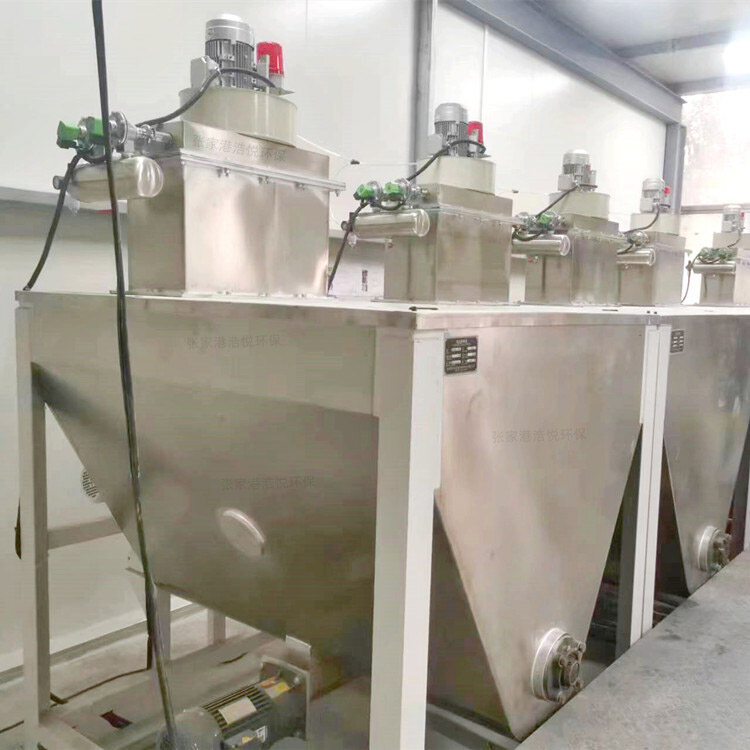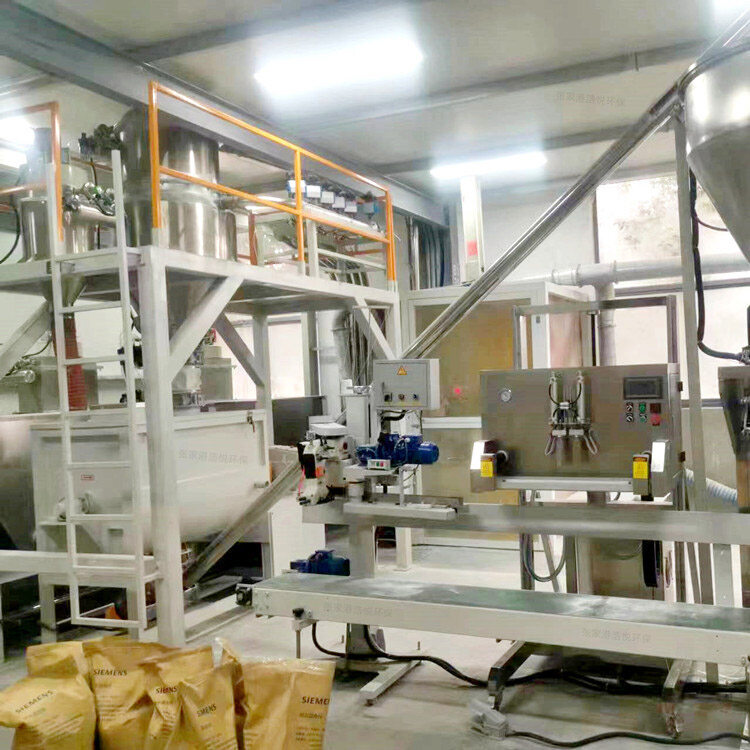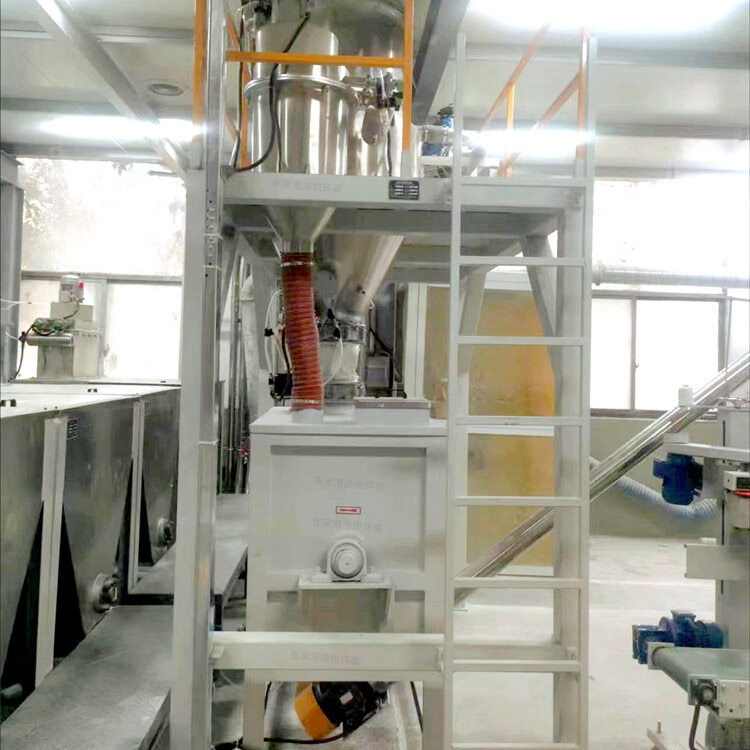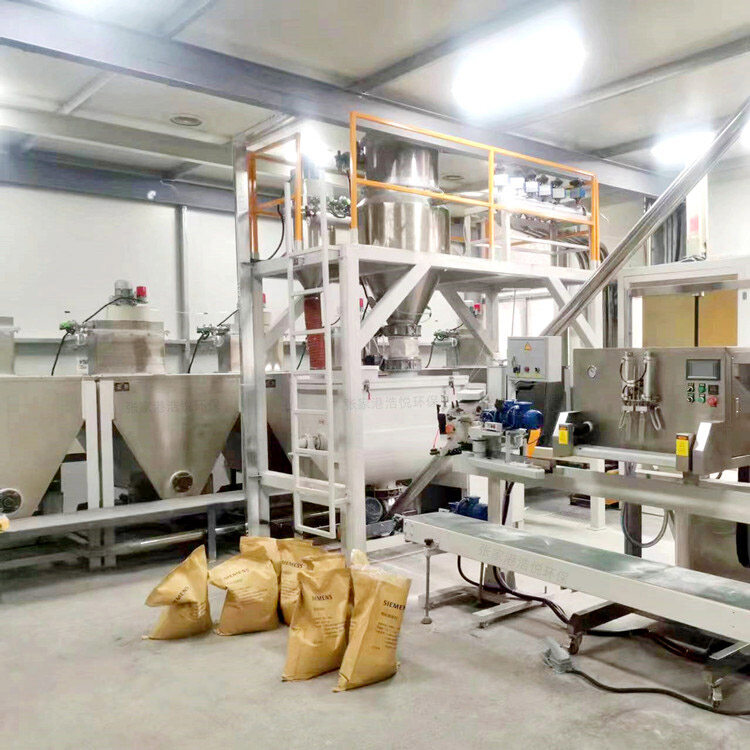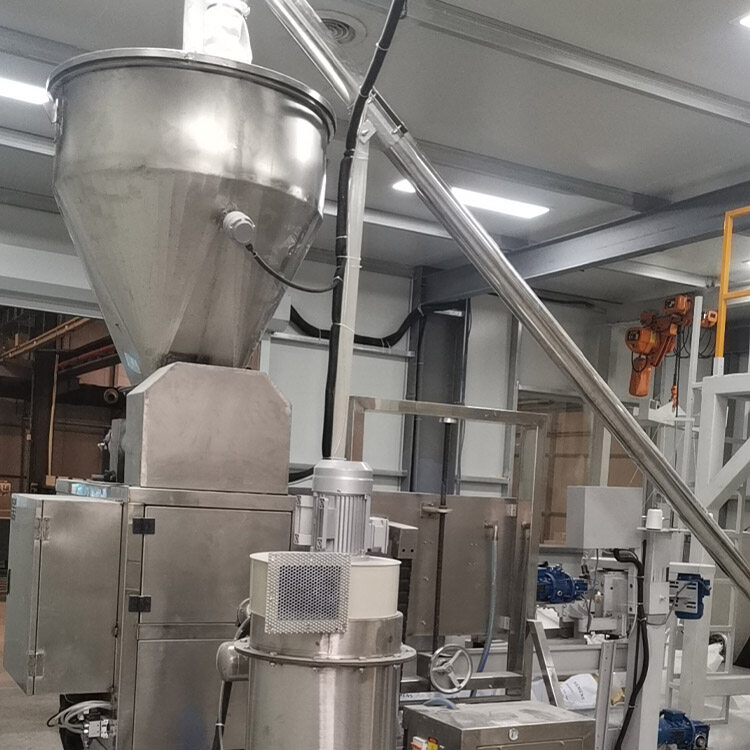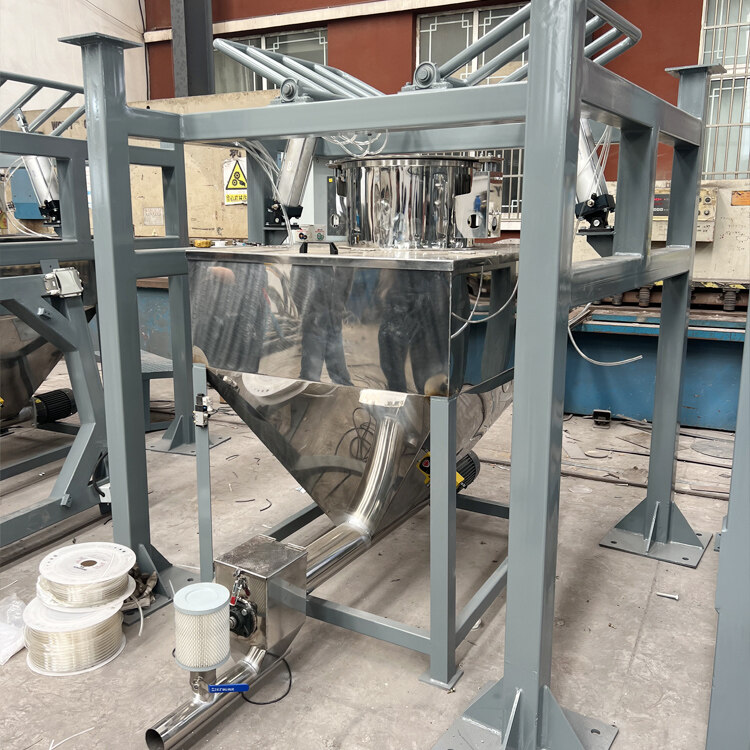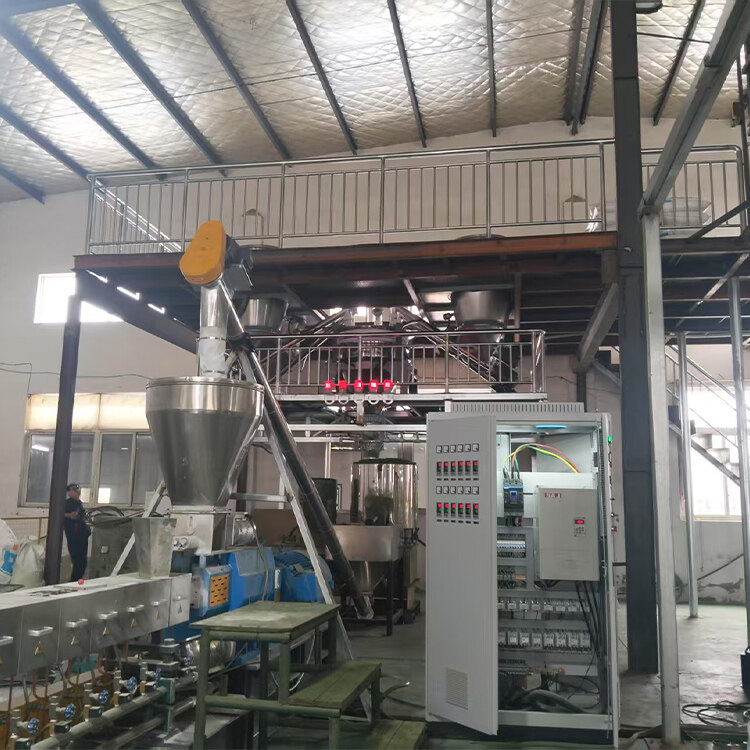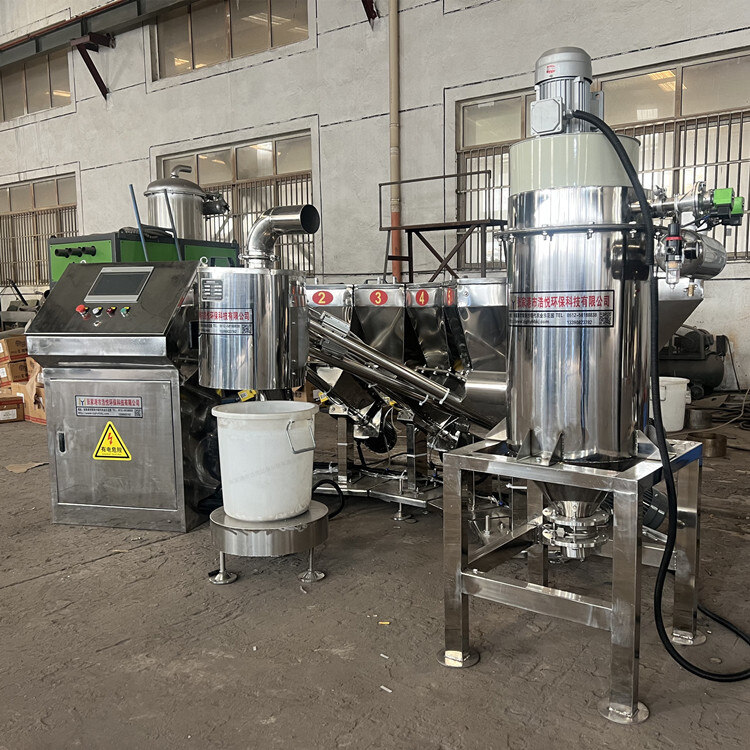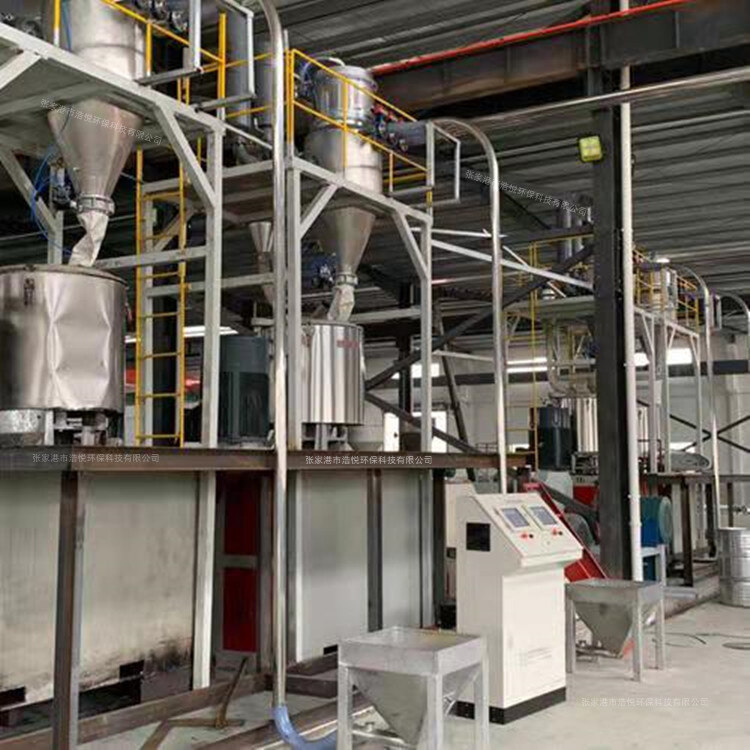- Introduction to automatic batching machine and fully automatic batching machine equipment
- The powder metering system tells you about the introduction of the mixing and drying machine
- 1000kg vacuum feeding machine
- Fully automatic small material batching system
- Research on Innovation of Automatic Weighing Machine Technology
- Design and operation of automatic batching system using PLC, industrial computer and frequency converter
Packaging machine production line
- Category:other
- Hits:151次
- Release Date:2025-06-23
- Share:
- Inquiry
- Details
1、 System composition and core functions of packaging machine production line
Automated integration function
The packaging machine production line integrates multiple processes such as feeding, measuring, filling, sealing, printing, testing, and palletizing, and achieves full process automation through PLC control system and industrial robot technology. Compared to traditional manual packaging, the production efficiency is increased by 3-5 times, and it can operate continuously for 24 hours, effectively meeting the needs of large-scale production.
High precision measurement and filling
Corresponding measuring devices are used for different product forms (granules, powders, liquids, blocks, etc.): multi head scales and volumetric measuring devices are used for granular products; Powder type uses screw metering machine; The liquid is accurately measured through a flow meter or metering pump. The measurement accuracy can be controlled within ± 0.5% - ± 2% to ensure that the weight or capacity of each package of products meets the standards.
Diversified packaging forms support
The production line can adapt to various packaging materials (plastic film, paper boxes, glass bottles, metal cans, etc.) and packaging forms, such as three sided sealing, four sided sealing, pillow packaging, vacuum packaging, sterile packaging, etc. By changing molds and adjusting parameters, quickly switch packaging of different specifications of products to meet diverse market demands.
Quality Inspection and Intelligent Control
Equipped with visual inspection system, weight sorting machine, metal detector and other equipment, real-time detection of packaging integrity, product weight, foreign object mixing and other issues. Once non-conforming products are found, the system automatically eliminates them and alarms to ensure that the factory products are 100% qualified. At the same time, the production line supports integration with the factory MES system to achieve real-time monitoring and traceability of production data.
2、 Analysis of the core equipment of packaging machine production line
feeding system
Including storage bins, vibrating discs, conveyor belts and other equipment, responsible for orderly conveying products to the packaging station. For products that are prone to sticking or irregular, mechanical arms or visual sorting devices can be configured to achieve precise feeding.
Measurement and filling equipment
Particle/powder measurement: The multi head scale uses a combination weighing algorithm to quickly calculate the optimal weight combination; The screw metering machine controls the material flow rate by rotating the screw, and is suitable for powdered materials such as flour and medicine.
Liquid filling: Atmospheric pressure filling machine is suitable for low viscosity liquids; Negative pressure filling machine can prevent foam; Piston filling machines are suitable for high viscosity liquids such as sauces.
Sealing and Forming Equipment
Heat sealing equipment: Plastic film sealing is achieved through heating strips and hot pressing wheels, with a temperature control accuracy of ± 2 ℃, ensuring a firm and leak free seal.
Vacuum packaging machine: Extract the air from the packaging and heat seal it to extend the shelf life of food; Some models support filling with inert gases such as nitrogen.
Bag making machine: The roll film is made into bag shapes such as three side seal and four side seal, and the bag making speed can reach 60-120 pieces/minute.
Identification and testing equipment
Printing equipment: using heat transfer printing and laser marking technology, printing production date, batch number, QR code and other information on the packaging, with a printing accuracy of over 300dpi.
Visual inspection system: Using industrial cameras and AI algorithms, it detects issues such as packaging pattern integrity, sealing quality, and product missing, with an accuracy rate of over 99.5%.
Weight sorting machine: dynamic weighing range of 5-5000g, accuracy of ± 0.1g, automatically eliminates products with unqualified weight.
Stacking and packaging equipment
At the end, the packaged products are stacked according to rules by palletizing robots or robotic arms, and then undergo secondary packaging through winding machines and packaging machines for easy transportation and storage. The stacking speed can reach 1200-2000 boxes/hour.
3、 Typical workflow
Product loading: The product enters the production line through a conveyor belt or vibrating disc, and is sorted by a robotic arm or visual system to a designated workstation.
Measurement filling: Select the corresponding measurement method based on product characteristics and accurately fill the material into the packaging container.
Sealing and molding: Performing operations such as heat sealing, vacuum sealing, filling and sealing on the packaging to ensure its sealing performance.
Identification printing: Print necessary information on the packaging surface for easy traceability and sales.
Quality inspection: Conduct a full inspection of the product through visual, weighing, metal detection and other equipment to eliminate non-conforming products.
Stacking packaging: Stack qualified products according to specifications and perform secondary packaging such as wrapping and packaging.
Finished product output: The packaged products are sent out of the production line through a conveyor belt and enter the warehousing or logistics process.
4、 Application scenarios
Food industry: bagged packaging of instant noodles and snacks; Filling and sealing of sauces and beverages; Vacuum packaging of meat, cooked food, etc.
Pharmaceutical industry: bottling and aluminum-plastic packaging of pharmaceutical tablets; Counting and filling of capsules; Aseptic packaging of medical consumables.
Daily chemical industry: filling and sealing of shampoo and shower gel; Box packaging of cosmetics; The facial mask is packaged in bags.
Chemical industry: barrel filling of coatings and lubricants; Large bag packaging for laundry detergent and fertilizer.
5、 Technological development trends
Intelligent upgrade: Introducing AI algorithms to optimize equipment scheduling and simulating production line operation through digital twin technology; Utilize 5G to achieve remote operation and maintenance of devices and fault prediction.
Flexible production: Modular design supports quick switching of packaging specifications, coupled with robots to achieve multi variety and small batch production; The adaptive system can automatically adjust parameters to match different products.
Green and environmentally friendly: Developing biodegradable packaging material adaptation equipment; Optimize energy consumption management, adopt energy-saving motors and intelligent control systems to reduce operating costs; Reduce packaging material waste and achieve precise feeding.
Human robot collaboration: Developing secure collaborative robots to assist humans in completing complex operations; Realize remote guidance and training through AR technology.
The packaging machine production line has continuously improved its automation and intelligence level through technological innovation, and has become a key equipment for modern manufacturing to enhance competitiveness. In the future, with the deepening application of Industry 4.0 technology, it will play a more important role in promoting digital transformation of enterprises and achieving intelligent manufacturing.


